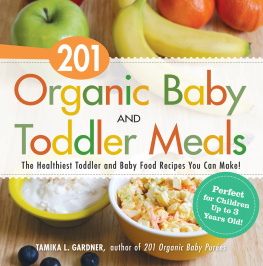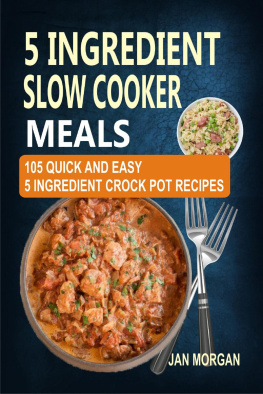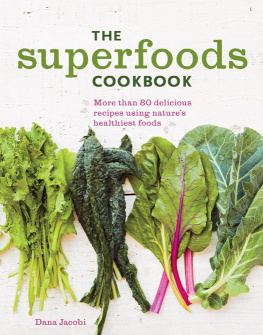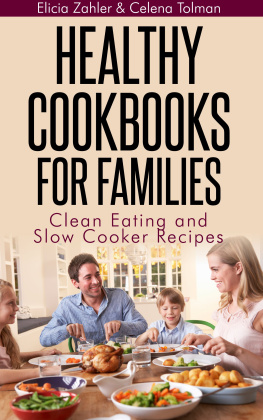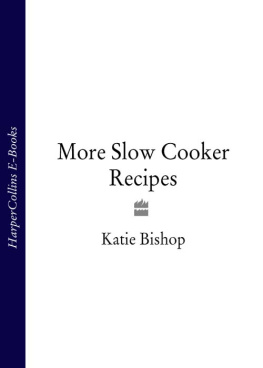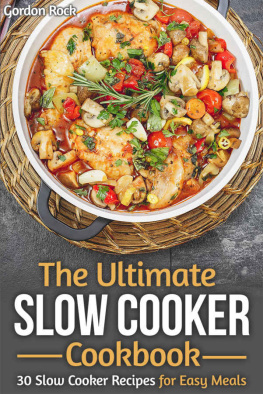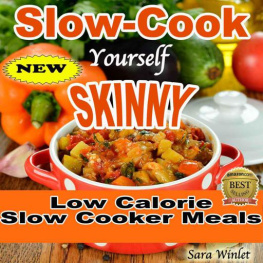To my mother, Vivienne Simon Bowden,
who taught me everything I know about cooking,
and to my partner and friend, Jeannette Bessinger,
who filled in the gaps
CONTENTS
INTRODUCTION
I want to start this introduction by telling you about something that youve probably never heard of beforethe polymeal.
First, a bit of background. On June 28, 2003, a couple of research scientists (Nicholas Wald and Malcolm Law, if you really want to know) published a paper in the august British Medical Journal called A Strategy to Reduce Cardiovascular Disease by More Than Eighty Percent. Because cardiovascular disease is the number-one killer in the United States, and most people would prefer to live longer and healthier, anything written by reputable scientists in a reputable medical journal that promises an 80 percent reduction in this deadly disease is going to get some serious attention.
Wald and Law theorized that if there was some way to combine a bunch of well-known, cheap medications into one hypothetical pill (which they called the polypill), and if you could somehow get everyone over 55 to take that pill every day, the reduced mortality from heart disease and stroke would be about 80 percent. This was only a statistical prediction, of course, but it was based on considerable research with large groups of people (like the famous Framingham Heart Study) that allowed them to predict how many people would normally die of cardiovascular disease over a given period of time, and how many would actually be saved by taking the polypill.
The polypill they proposed would contain a mix of six basic medications: three blood pressure medications plus a statin drug (which lowers cholesterol and inflammation), aspirin, and the B vitamin folic acid.
Which brings me to the polymeal.
FROM PILL TO PLATE
A year after the polypill was proposed, a Colombian scientist named Oscar Franco published a reply paper in the same British Medical Journal. Franco and his colleagues took the (gasp) revolutionary approach that maybe pills werent the only way you could prevent disease. He suggested that dining regularly on a polymeala meal composed of ingredients that could boost the health of the heart and the blood vesselscould do just as good a job, cutting the risk of cardiovascular disease by more than three-quarters.
Using the same statistical prediction techniques as the previous researchers, Franco said that eating a diet rich in polymeals would delay the average onset of a heart attack by 9 years for men and 8 years for women, and that because cardiovascular disease is the number-one cause of mortality in industrialized nations, this delay would wind up increasing the average lifespan by between 4.8 and 6.6 years. Men could expect to live free from cardiovascular disease for at least 9 years more than they would without eating polymeals, and women could expect to be heart-disease-free for an additional 8.1 years.
The point we are trying to make is that it is not only through pills that you can prevent disease, said Franco. The polymeal is a natural alternative. Franco pointed out in interviews that by exercising, not smoking, and eating the prescribed food within a balanced diet, a future of pills and medicalization could be avoided.
The polymeal promises to be an effective, non-pharmacological, safe, cheap, and tasty alternative to reduce cardiovascular morbidity and increase life expectancy in the general population, he concluded.
The major ingredients of the polymeal? Simple. Fish, garlic, almonds, fruits, vegetables, and dark chocolate, all polished off with a nice little glass of red wine.
Which got me thinking.
WHAT HIPPOCRATES KNEW THAT WE DONT
Ever since Hippocratesthe father of modern medicineuttered his famous saying Let thy food be thy medicine and thy medicine be thy food, weve known that food has healing properties. I wrote about this at length in my book The 150 Healthiest Foods on Earth, discussing the remarkable and awesome ability of chemicals in food to serve as protectors of cells, defenders against cancer, and boosters of immunity.
Antioxidants, anti-inflammatories, flavonoids, polyphenols, and dozens of other classes of chemical compounds in foods help the liver get rid of toxins, protect DNA from damage, keep the brain and heart healthy, improve mood, and improve circulation, keeping blood and oxygen freely flowing to brain, heart, and other tissues.
Protein in our food provides the building blocks out of which the body constructs muscles, bones, neurotransmitters, and hormones; plant foods provide antioxidants and anti-inflammatories; and fats provide energy as well as anti-inflammatory and immune-enhancing properties of their own. No wonder people (like me) think of the local farmers market as the ultimate natural pharmacy!
Homemade Energy Bars Yield: 12 bars
Your polymeal on the go
The energy bar recipe below is a perfect example of a portable polymealits packed with protein, good fats in the form of nuts, and nutrient-rich apricots and raisins. If youre looking for an easy, nutritionally dense snack that travels well, this fits the bill perfectly.
Developed by pro triathlete Christy Underdonk, Potomac, Maryland
cup (40 g) almonds
1 cups (120 g) rolled oats (not instant)
1 cup (100 g) puffed brown rice cereal
1 cups (263 g) diced dried apricots
1 cups (220 g) currants or raisins
cup (64 g) nonfat vanilla protein powder
cup (56 g) toasted wheat germ
1 cup (340 g) brown rice syrup
cup (170 g) blue agave nectar
cup (130 g) reduced-fat peanut butter
1 teaspoons vanilla extract
teaspoon cinnamon
Preheat oven to 350F (180C, gas mark 4).
Chop up the almonds by hand or put in a food processor and pulse a few times. Spread the oats, cereal, and almonds on a 13- 9-inch (33- 23-cm) nonstick pan lined with parchment paper. Bake, stirring occasionally, until the oats are toasted, about 15 minutes.
Meanwhile, chop the apricots, using a food processor if possible; transfer to a large bowl. Add the currants, protein powder, and wheat germ; toss with a rubber spatula to mix.
Combine the rice syrup and agave nectar in a heavy saucepan over medium-high heat and bring to a boil. Reduce the heat to low and stir in the peanut butter, vanilla, and cinnamon. Quickly pour the syrup over the oatmeal mixture and stir well.
With a spatula, immediately spread the warm mixture into a jelly-roll pan. Place another piece of parchment paper on top of the mixture and press into a thin, even layer. You must work quickly to prevent the mixture from becoming too cool and difficult to spread. Chill until firm, at least 4 hours.
Cut into 2- 3-inch (5- 8-cm) bars or whatever size desired. Wrap individually in plastic or foil and store in an airtight container and refrigerate. They can also be frozen for longer storage.
The Low-Fat Diet Myth
If you glance through the book, you may notice the presence of a number of ingredients such as coconut oil, avocado, and butter, which may surprise you. Youlike most peoplemay have been taught to believe that such foods dont belong in a healthy foods book because they are high in fat.
Let me explain.
I do not believe in low-fat diets. I also do not believe that fat is at the root of all evil.
I realize this puts me in the outlier class of nutritionists, though there are more and more of usdoctors, nutritionists, naturopaths, and science journalistswho are coming on board every day. And I also realize that we may not become the majority opinion for many years. But hear me out anyway.


